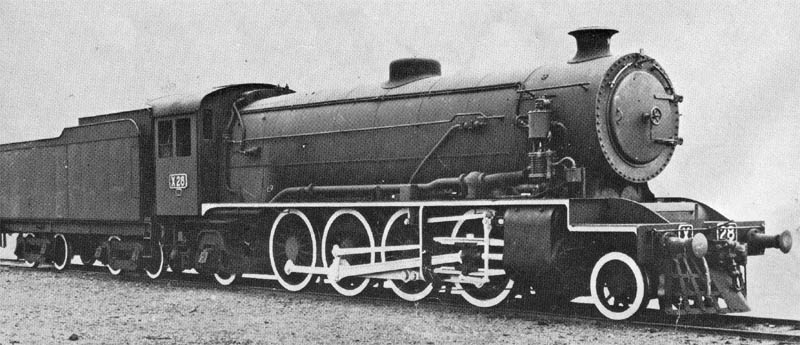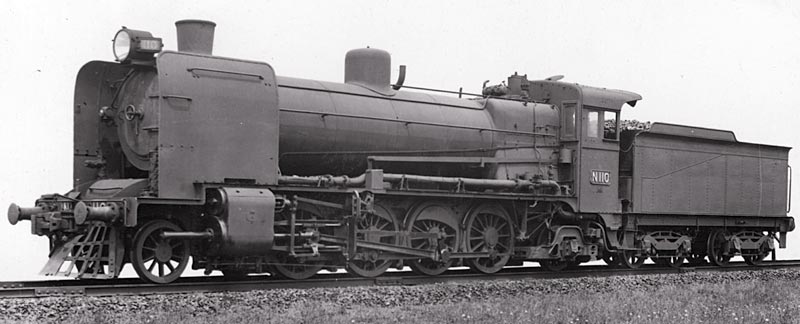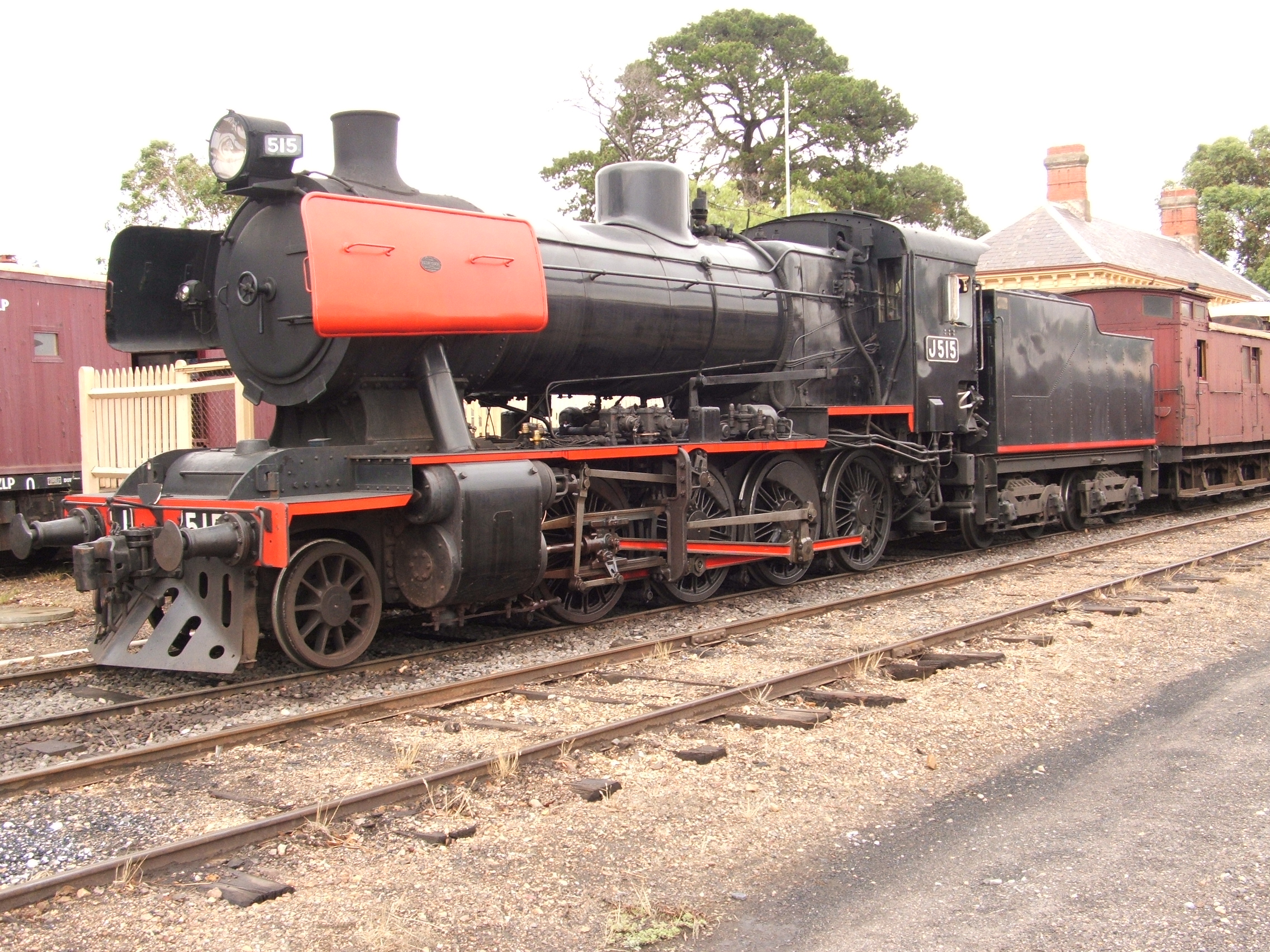|
Noojee Railway Line
The Noojee railway line is a closed railway line in State of Victoria, Victoria, Australia. Branching off from the Orbost railway line, Gippsland line at Warragul railway station, Warragul station, it was built to service the timber industry in the upper Latrobe River area, transporting timber as well as providing a general goods and passenger service to townships in the area. The final section of the line between Neerim South, Victoria, Neerim South and Noojee, Victoria, Noojee traversed increasingly hilly terrain and featured a number of large timber trestle bridges. Extensively and repeatedly damaged by bushfires over the years, the line was closed in the 1950s and dismantled. The last remaining large trestle bridge on the line has been preserved and has become a popular local tourist attraction. History Only a few years after the opening of the Gippsland mainline to Sale, townships along the upper reaches of the Latrobe River began to petition for a branch line to be built t ... [...More Info...] [...Related Items...] OR: [Wikipedia] [Google] [Baidu] |
Single Track (rail)
A single-track railway is a railway where trains traveling in both directions share the same track. Single track is usually found on lesser-used rail lines, often branch lines, where the level of traffic is not high enough to justify the cost of constructing and maintaining a second track. Advantages and disadvantages Single track is significantly cheaper to build and maintain, but has operational and safety disadvantages. For example, a single-track line that takes 15 minutes to travel through would have capacity for only two trains per hour in each direction safely. By contrast, a double track with signal boxes four minutes apart can allow up to 15 trains per hour in each direction safely, provided all the trains travel at the same speed. This hindrance on the capacity of a single track may be partly overcome by making the track one-way on alternate days, if the single track is not used for public passenger transit. Long freight trains are a problem if the passing ... [...More Info...] [...Related Items...] OR: [Wikipedia] [Google] [Baidu] |
The Argus (Australia)
''The Argus'' was an Australian daily morning newspaper in Melbourne from 2 June 1846 to 19 January 1957, and was considered to be the general Australian newspaper of record for this period. Widely known as a conservative newspaper for most of its history, it adopted a left-leaning approach from 1949. ''The Argus''s main competitor was David Syme's more liberal-minded newspaper, ''The Age''. History The newspaper was originally owned by William Kerr, who was also Melbourne's town clerk from 1851–1856 and had been a journalist at the ''Sydney Gazette'' before moving to Melbourne in 1839 to work on John Pascoe Fawkner's newspaper, the '' Port Phillip Patriot''. The first edition was published on 2 June 1846. The paper soon became known for its scurrilous abuse and sarcasm, and by 1853, after he had lost a series of libel lawsuits, Kerr was forced to sell the paper's ownership to avoid financial ruin. The paper was then published by Edward Wilson. By 1855, it had a daily ci ... [...More Info...] [...Related Items...] OR: [Wikipedia] [Google] [Baidu] |
2-8-2
Under the Whyte notation for the classification of steam locomotives, represents the wheel arrangement of two leading wheels on one axle, usually in a leading truck, eight powered and coupled driving wheels on four axles and two trailing wheels on one axle, usually in a trailing truck. This configuration of steam locomotive is most often referred to as a Mikado, frequently shortened to Mike. At times it was also referred to on some railroads in the United States of America as the McAdoo Mikado and, during World War II, the MacArthur. The notation 2-8-2T indicates a tank locomotive of this wheel arrangement, the "T" suffix indicating a locomotive on which the water is carried in tanks mounted on the engine rather than in an attached tender. Overview The 2-8-2 wheel arrangement allowed the locomotive's firebox to be placed behind instead of above the driving wheels, thereby allowing a larger firebox that could be both wide and deep. This supported a greater rate of combustio ... [...More Info...] [...Related Items...] OR: [Wikipedia] [Google] [Baidu] |
Victorian Railways N Class
The N class was a branch line steam locomotive that ran on Victorian Railways from 1925 to 1966. A development of the successful Victorian Railways K class, K class 2-8-0, it was the first VR locomotive class designed for possible Track gauge conversion, conversion from to . History In 1923, in response to the recommendations made by the 1921 List of Australian Royal Commissions, Royal Commission on the matter of uniform railway gauge, VR announced a policy that all new locomotive designs were to be capable of gauge conversion, conversion from broad to standard gauge.Pearce et al., p. 12 The rationale was that the task of converting VR from broad to standard gauge at a future date would be far easier to achieve if the existing locomotives and rolling stock could be easily modified for standard gauge operation, rather than requiring expensive re-engineering or replacement. The Victorian Railways K class, K class 2-8-0 built by VR in 1922-23 was a success, but with a firebox (s ... [...More Info...] [...Related Items...] OR: [Wikipedia] [Google] [Baidu] |
Victorian Railways K Class
The K class was a branch line steam locomotive that ran on Victorian Railways in Australia from 1922 to 1979. Although its design was entirely conventional and its specifications unremarkable, the K class was in practice a remarkably versatile and dependable locomotive. It went on to outlast every other class of steam locomotive in regular service on the VR, and no fewer than 21 examples of the 53 originally built have survived into preservation. History The K class was the first design from the VR Locomotive Design Section under the stewardship of Alfred E Smith as Chief Mechanical Engineer. The Locomotive Design Section had introduced successful mainline and branchline passenger locomotives with the A2 class and Dd class 4-6-0s, and had recently improved mainline goods services with the C class 2-8-0. They now turned their attention to a requirement for a more powerful branchline goods locomotive, and in 1922 produced a lighter 2-8-0 "Consolidation" locomotive with a a ... [...More Info...] [...Related Items...] OR: [Wikipedia] [Google] [Baidu] |
2-8-0
Under the Whyte notation for the classification of steam locomotives, represents the wheel arrangement of two leading wheels on one axle, usually in a leading truck, eight powered and coupled driving wheels on four axles, and no trailing wheels. In the United States and elsewhere, this wheel arrangement is commonly known as a Consolidation, after the Lehigh and Mahanoy Railroad’s ''Consolidation'', the name of the first 2-8-0.White, John H. Jr. (1968). ''A history of the American locomotive; its development: 1830-1880''. New York: Dover Publications, p. 65. The notation 2-8-0T indicates a tank locomotive of this wheel arrangement, the "T" suffix indicating a locomotive on which the water is carried in side-tanks mounted on the engine rather than in an attached tender. The Consolidation represented a notable advance in locomotive power. After 1875, it became "the most popular type of freight locomotive in the United States and was built in greater quantities than any other si ... [...More Info...] [...Related Items...] OR: [Wikipedia] [Google] [Baidu] |
K103-1922
K1, K.I, K01, K 1 or K-1 can mean: Geography * K1, another name for Masherbrum, a mountain in the Karakoram range in Pakistan * K1, a small town to north of Kirkuk city, Iraq * K1 (building), a high-rise building in Kraków, Poland Mathematics * K_1(R) denotes the first algebraic K-theory group of a ring R. Military * Denel K1, a South African mortar * Daewoo Precision Industries K1, a carbine of the South Korean army * EMER K-1, a Burmese assault rifle designated EMERK * Fokker K.I, a World War I German experimental aircraft * Kucher Model K1, a Hungarian submachine gun * , a World War I British submarine * HMS ''Acanthus'' (K01) / HNoMS ''Andenes'' (K01), a 1939 British, then Norwegian Flower-class corvette * K1 88-Tank, a modern main battle tank of the South Korean military * K-1 cart a United States Signal Corps cart for carrying signal equipment * K 1, a designation for a Swedish cavalry regiment * K1-class gunboat, planned World War II German gunboat * K1, a World ... [...More Info...] [...Related Items...] OR: [Wikipedia] [Google] [Baidu] |
Turntable (rail)
In rail terminology, a railway turntable or wheelhouse is a device for turning railway rolling stock, usually locomotives, so that they can be moved back in the direction from which they came. Naturally, it is especially used in areas where economic considerations or a lack of sufficient space have served to weigh against the construction of a turnaround wye. In the case of steam locomotives, railways needed a way to turn the locomotives around for return trips as their controls were often not configured for extended periods of running in reverse and in many locomotives the top speed was lower in reverse motion. In the case of diesel locomotives, though most can be operated in either direction, they are treated as having "front ends" and "rear ends" (often determined by reference to the location of the crew cab). When operated as a single unit, the railway company often prefers, or requires, that a diesel locomotive is run "front end" first. When operated as part of a multiple ... [...More Info...] [...Related Items...] OR: [Wikipedia] [Google] [Baidu] |
Grade (slope)
The grade (also called slope, incline, gradient, mainfall, pitch or rise) of a physical feature, landform or constructed line refers to the tangent of the angle of that surface to the horizontal. It is a special case of the slope, where zero indicates horizontality. A larger number indicates higher or steeper degree of "tilt". Often slope is calculated as a ratio of "rise" to "run", or as a fraction ("rise over run") in which ''run'' is the horizontal distance (not the distance along the slope) and ''rise'' is the vertical distance. Slopes of existing physical features such as canyons and hillsides, stream and river banks and beds are often described as grades, but typically grades are used for human-made surfaces such as roads, landscape grading, roof pitches, railroads, aqueducts, and pedestrian or bicycle routes. The grade may refer to the longitudinal slope or the perpendicular cross slope. Nomenclature There are several ways to express slope: # as an ''angle'' of ... [...More Info...] [...Related Items...] OR: [Wikipedia] [Google] [Baidu] |
Victorian Railways
The Victorian Railways (VR), trading from 1974 as VicRail, was the state-owned operator of most rail transport in the Australian state of Victoria (Australia), Victoria from 1859 to 1983. The first railways in Victoria were private companies, but when these companies failed or defaulted, the Victorian Railways was established to take over their operations. Most of the lines operated by the Victorian Railways were of . However, the railways also operated up to five Narrow gauge lines of the Victorian Railways, narrow gauge lines between 1898 and 1962, and a line between Albury railway station, Albury and Melbourne from 1961. History Formation A Department of Railways (1858–71), Department of Railways was created in 1856 with the first appointment of staff. British engineer, George Christian Darbyshire was made first Engineer-in-Chief in 1857, and steered all railway construction work until his replacement by Thomas Higginbotham in 1860. In late 1876, New York consulting engi ... [...More Info...] [...Related Items...] OR: [Wikipedia] [Google] [Baidu] |
Victorian Broad Gauge
Railways with a track gauge of fall within the category of broad gauge railways. , they were extant in Australia, Brazil and Ireland. History 600 BC :The Diolkos (Δίολκος) across the Isthmus of Corinth in Greece – a grooved paved trackway – was constructed with an average gauge of . 1840 : The Grand Duchy of Baden State Railway was constructed in 1840-1851 to gauge before being converted to in 1854–1855. 1843 : The Board of Trade of the United Kingdom of Great Britain and Ireland, after investigating a dispute caused by diverse gauges, recommended the use of in Ireland. 1846 : The Regulating the Gauge of Railways Act 1846 made mandatory throughout all of Ireland. 1847 : The Swiss Northern Railway was opened as a line and converted to in 1854. 1854 : The first Australian railway to operate steam-powered freight and passenger services, Melbourne and Hobson's Bay Railway Company, was built as a line. 1858 : The first Brazilian railway was opene ... [...More Info...] [...Related Items...] OR: [Wikipedia] [Google] [Baidu] |








.jpg)